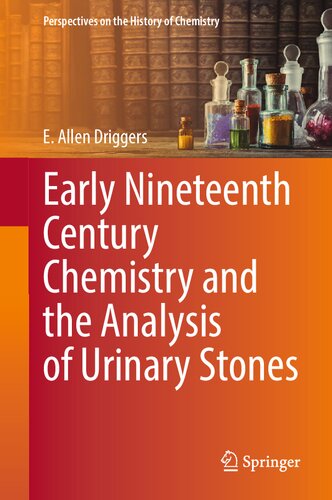

Most ebook files are in PDF format, so you can easily read them using various software such as Foxit Reader or directly on the Google Chrome browser.
Some ebook files are released by publishers in other formats such as .awz, .mobi, .epub, .fb2, etc. You may need to install specific software to read these formats on mobile/PC, such as Calibre.
Please read the tutorial at this link: https://ebookbell.com/faq
We offer FREE conversion to the popular formats you request; however, this may take some time. Therefore, right after payment, please email us, and we will try to provide the service as quickly as possible.
For some exceptional file formats or broken links (if any), please refrain from opening any disputes. Instead, email us first, and we will try to assist within a maximum of 6 hours.
EbookBell Team

4.8
104 reviewsThis book tells the story of how chemists, physicians, and surgeons attempted to end the problem of urinary stones. From the late eighteenth to the early nineteenth centuries, chemists wanted to understand why the body formed urinary, pancreatic, and other bodily stones. Chemical analysis was an exciting new means of understanding these stones and researchers hoped of possibly preventing their formation entirely. Physicians and surgeons also hoped that, with improved chemical analysis, they would eventually identify substances that would reduce the size of stones, leading to their easier removal from the body. Urinary stones and other stones of the body caused the boundaries of surgery, chemistry, and medicine to blur. The problem of the stone was transformational and spurred collaboration between chemistry and medicine. Some radical physicians in America and Britain combined this nascent medical advancement with older disciplines, like humoral theory. Chemists, surgeons, and physicians in Charleston, Philadelphia, and London focused on the stones of the body. Chemical societies and museums also involved themselves in the problem of the stone. Meanwhile, institutions in Charleston, Philadelphia, and London served as repositories of specimens for testing and study as previously disparate practitioners and disciplines worked toward the comprehensive knowledge that could, perhaps, end suffering from stones. The primary audience of this book is historically-minded chemists, surgeons, physicians, and museum professionals.